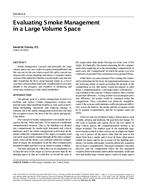Acidity, chloride, and fluoride are very detrimental contaminants in refrigerants, and improved and accurate measurements of these contaminants are needed. In addition, In this research project, twenty refrigerant samples were analyzed by ion chromatography to determine the concentrations of chloride, fluoride, and organic acid anions in the samples. The same twenty samples were also analyzed for chloride, according to part 4 of Appendix C to ARI Standard 700-95, and for acidity, according to part 1 of Appendix C to ARI Standard 700-95. A comparison of the chloride concentrations obtained by ion chromatography with the pass/fail data obtained by the ARI standard was used to establish the maximum parts per million chloride acceptable in new or reclaimed refrigerants. A comparison of the total concentrations of organic and inorganic acids obtained by ion chromatography with the parts per million acids as HCl obtained by the ARI standard titration was used to determine whether ion chromatography is an adequate alternative technique of acid determination. In addition, ion chromatography provided quantitative values to the fluoride ion concentrations in refrigerant samples.
The effectiveness of inert linings in preventing the occurrence of chemical reactions in sampling vessels was also tested. Laboratory-prepared samples of R-22 refrigerant containing measured concentrations of HCl and oleic acid were stored in a stainless steel pressure bomb without liner, a bomb with glass liner, and a bomb with fluorocarbon polymetric liner. These refrigerant samples were stored at 131ºF (55ºC) for 14 and 30 days. The concentrations of acids in the refrigerants were determined before and after storage and were used to compare the fluorocarbon-lined or glass-lined vessel to the stainless steel vessel.
Units: Dual
Citation: ASHRAE Transactions, vol. 107, pt. 1
Product Details
- Published:
- 2001
- Number of Pages:
- 6
- File Size:
- 1 file , 180 KB
- Product Code(s):
- D-22533


